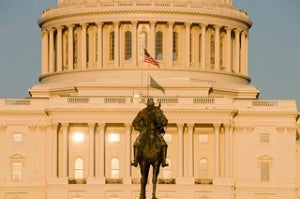
“An unprecedented, collaborative effort” was a blog published last week in The Hill by U.S. Fish and Wildlife Service Director Dan Ashe, BLM Director Neil Kornze, USFS Chief Tom Tidwell and NRCS Chief Jason Weller.
Last week, leaders of the four federal agencies dealing most closely with issues surrounding the greater sage-grouse delivered a strong public message: As long as stakeholders continue to work together, we can save this bird and preclude the need for listing.
The message was powerful – not just because it was endorsed by four of our nation’s top thinkers on conservation, but because it was optimistic.
“We have seen what’s possible when we all pull our oars in the same direction,” they wrote.
This is a fundamental turning of the tides in the conversation around sage grouse. Previously, the dialogue has been pointed, with industry interests, agriculture interests and wildlife interests caught in crosshairs. But the discourse has changed, and it’s because the situation on the ground has changed.
A sagebrush sea change
Across the West, groups of stakeholders are working together to develop habitat exchanges – voluntary market-based programs that offer advanced mitigation for sage grouse and other species by supporting strong and consistent standards.
If you were to go out to sage grouse country in Nevada, you would find a pilot project underway in which a rancher is managing his land to enhance grouse habitat. These habitat improvements may eventually be sold as a conservation credit under the Nevada Conservation Credit System – a habitat exchange recently adopted by the state of Nevada. The project is currently in the field data collection phase to determine conservation outcomes that can help to inform future projects.
Earlier this month, Colorado Governor John Hickenlooper issued an executive order encouraging energy and other developers in the state to pursue sage grouse mitigation through the Colorado Habitat Exchange.
A multi-stakeholder effort is underway in Wyoming to build a version of habitat exchanges – the Wyoming Conservation Exchange – to voluntarily enroll farmers and ranchers in conservation commitments as soon as this summer.

The greater sage-grouse, an icon of the energy-rich sagebrush deserts across 11 Western states, is poised to lose 71 percent of its breeding range by 2080.
In May, Montana passed legislation designating $10 million to sage grouse conservation efforts. You guessed it – the legislation recognized market-based habitat exchanges as a mechanism to provide conservation.
Need more on board
At least four of the 11 sage grouse states have answered the federal call for cooperative conservation with habitat exchange programs that have the potential to deliver big for this bird. But the job isn’t done yet.
We need to continue building momentum – in the form of conservation dollars and regulatory assurances for market participants – to reach full market potential.
Now is the time to step up. We need to continue pulling our oars in the same direction.









